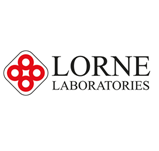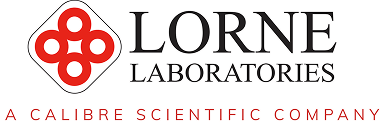Blood Vessel Diseases
11 September 2017
Blood Vessel disease is characterised by the narrowing of the arteries and veins because of a build-up of fatty deposits, which impacts the blood supply around the body. Although more common in individuals over the age of 45, if family members have suffered from heart or blood vessel diseases they are also more likely to develop diseases in the blood vessels. External factors such as diabetes, smoking, obesity and high cholesterol have also been linked to an increased risk. Through a combination of tests involving Blood Grouping Reagents, Red Cells and Diagnostic Kits it is possible to identify and treat blood vessel diseases.
There are many different types of blood vessel diseases, however they all typically and similar symptoms:
• Muscle aches and stiffness.
• Cold hands and/or feet.
• Pale skin.
• Hair loss on the legs and feet.
• Sores that take a prolonged time to heal, or turn black when scabbed over.
• Skin and nails appear with a reddish blue colour. Pain felt when exercising that disappears when resting.
Blood Vessel Diseases can be easily kept away with a healthy lifestyle, so ensuring exercise is had every day and eating a diet that is low in fat, high in fibre can be the best preventative method when it comes to blood vessel diseases.
Types of Blood Vessel Diseases
High Blood Pressure
The most common blood vessel disease is high blood pressure (or hypertension). This condition is caused by the increased pressure of blood moving through the vessels that can lead to heart failure and strokes due to the body’s incapacity to deal with it.
Coronary Artery Disease
Also known as atherosclerosis, Coronary Artery Disease is the hardening of the arteries due to plaque build-up on the walls of the small arterial vessels that supply the heart with blood. When the arteries become narrower due to this disease, it restricts the blood flow
to the heart muscle, starving it of oxygenated blood that it needs to be able to operate sufficiently. When an individual with coronary artery disease undertakes exercise, their arteries may not be able to supply enough oxygen to the heart muscle. If this happens for a prolonged period of time, it can lead to a heart attack.
Peripheral Artery Disease
Often abbreviated as PAD, Peripheral Artery Disease is the narrowing of the blood vessels carrying oxygenated blood to peripheral areas of the body. Commonly, this disease affects the arteries in the legs or pelvic area. Like other cardiac ailments, this disease is mainly caused by the build-up of fat, cholesterol and calcium on the interior walls of the blood vessels. Although a serious blood vessel disease, PAD almost always goes unnoticed, or is mistaken for another condition. This is because the symptoms include cramping, pain or tiredness in the legs or hip muscles, which subside when the individual rests. When the disease worsens, an individual could start to notice constant pain in the legs and hip, with wounds around these areas not healing properly and appearing cold to the touch. If this stage of the disease is not treated it could ultimately lead to gangrene or worse still, limb loss.
Peripheral Venous Disease
Often referred to as PVD, Peripheral Venous Disease is when the veins carrying blood from the hands and feet to the heart have been blocked or damaged. Although mostly common in the arms and legs, this disease can occur anywhere in the body. Blood clots are the primary cause of PVD, as they occur where he vein walls have been weakened and blood flow has slowed which then starts to develop PVD. Individuals at a greater risk of PVD are women who are pregnant or taking birth control, and those who smoke, are obese, or have cancer.
Common treatment methods for Blood Vessel Disease
Typically, surgery is not appropriate for blood vessel diseases due to the vessels being difficult to operate on as they are permanently damaged. However, there are a range of medications that can be given to individuals with blood vessel disease to help control the narrowing of the blood vessels.
The common medications are:
• Nitroglycerin – which can be used to open up the arteries and improve the blood flow within them.
• Ranolazine – which can alter sodium and calcium levels to help ease common chest pain.
• Beta Blockers – designed to slow the heart rate, in turn decreasing blood pressure.
• Calcium channel blockers – designed to help relax the muscles around the coronary arteries, improving blood flow and decreasing the likelihood of a blockage.
• Statins – which are designed to open up vessels, which then helps increase blood flow.
• Aspirin – a very common medication given to individuals to help limit inflammation and prevent blood clots forming. However aspirin cannot be used in individuals already taking blood-thinning medication for other heart conditions, for this can cause further medical problems.
There are many tests that can be done to help determine the type of blood vessel disease an individual may suffer from. In order to undertake these tests and procedures, certain equipment and specimens are needed.
Lorne Laboratories is the only independent company in England to have consistently sought to provide a simple and total solution for Blood Transfusion professionals in the world. The Lorne team believes in providing high quality and affordable solutions to blood transfusion professionals in over 90 countries, with top products being Blood Grouping Reagents, Red Cells and Diagnostic Kits.
Contact Lorne Laboratories today to find out more about the products they can provide, whether from a medical institution or blood transfusion professional.
< Back to blog list
Share




